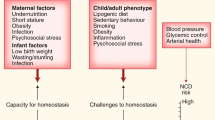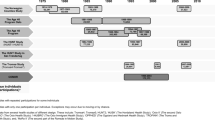Abstract
Good public policies are vital for protecting the health of populations. For the prevention and control of noncommunicable diseases (NCD), a single national policy is essential. Such a policy ensures clarity of vision and purpose, sets the platform for joint action to address risk factors and determinants that are shared by major NCDs, and provides coherence with other health and social policies. A national NCD policy also provides an overarching framework that enables governments to combine and balance synergistic public health strategies that target the whole population and those that target high-risk groups. Given that the adopted strategies are evidence-based and cost-effective, national NCD policy development can provide a strong basis for appropriate legislation and regulation in relation to tobacco control and promotion of healthy diet and physical activity. A national policy also serves as a vehicle to facilitate efficient and effective use of available public finances for NCD-related health care, while safeguarding equity. For the reasons alluded to above, a single national NCD policy is more appropriate than separate national polices for each individual NCD, particularly in low-income and middle-income countries that have a critical shortage of human and financial resources, including those necessary for policy development and implementation.
This is a preview of subscription content, access via your institution
Access options
Subscribe to this journal
Receive 12 print issues and online access
$209.00 per year
only $17.42 per issue
Buy this article
- Purchase on Springer Link
- Instant access to full article PDF
Prices may be subject to local taxes which are calculated during checkout

Similar content being viewed by others
References
WHO. The global burden of disease: 2004 update [online], (2008).
WHO. World Health Assembly. Global strategy for the prevention and control of noncommunicable diseases (NCDs). WHA A53/14 [online], (2000).
WHO. World Health Assembly. Action plan for the global strategy for the prevention and control of noncommunicable diseases (NCDs). WHA A61/8 [online], (2008).
WHO. Assessment of National Capacity for Noncommunicable Disease Prevention and Control. The report of a global survey [online], (2001).
WHO. World Health Report 2002. Reducing risks, promoting healthy life [online], (2002).
WHO. Prevention of cardiovascular disease: guidelines for assessment and management of total cardiovascular risk [online], (2007).
World Bank. Executive summary. Public policy and the challenge of chronic noncommunicable diseases [online], (2007).
Jamison, D. T. et al. (eds) Disease Control Priorities in Developing Countries, 2nd edn (Oxford University Press, New York, 2006).
WHO. Prevention of recurrent heart attacks and strokes in low and middle income populations. Evidence-based recommendations for policy makers and health professionals (WHO, Geneva, 2003).
Mendis, S. Cardiovascular risk assessment and management. J. Vasc. Health Risk Management 1, 15–18 (2005).
WHO. Conference of the Parties to the WHO Framework Convention on Tobacco Control [online], (2007).
WHO. Global strategy on diet, physical activity and health [online], (2004).
WHO. Commission on Social Determinants of Health. Closing the gap in a generation: health equity through action on the social determinants of health. Final report [online], (2008).
The national policy for prevention and control of noncommunicable diseases of Sri Lanka 2009–2015 (Ministry of Healthcare and Nutrition, Colombo, 2009).
Norwegian Ministry of Health and Care Services. National strategy to reduce social inequalities in health. Report No. 20 [online], (2007).
WHO. Framework for Action. Everybody's business: strengthening health systems to improve health outcomes [online], (2007).
WHO. World Health Report 2008. Primary health care—now more than ever [online], (2008).
Acknowledgements
The views expressed in this paper are solely the responsibility of the authors and do not necessarily reflect the decisions or stated policy of the WHO or its member states.
Author information
Authors and Affiliations
Corresponding author
Ethics declarations
Competing interests
The authors declare no competing financial interests.
Rights and permissions
About this article
Cite this article
Mendis, S., Fuster, V. National policies and strategies for noncommunicable diseases. Nat Rev Cardiol 6, 723–727 (2009). https://doi.org/10.1038/nrcardio.2009.171
Issue Date:
DOI: https://doi.org/10.1038/nrcardio.2009.171
This article is cited by
-
Noncommunicable diseases and health system responses in Saudi Arabia: focus on policies and strategies. A qualitative study
Health Research Policy and Systems (2022)
-
Strengthening complex systems for chronic disease prevention: a systematic review
BMC Public Health (2019)
-
Overweight and obesity epidemic in Ghana—a systematic review and meta-analysis
BMC Public Health (2016)
-
Noncommunicable Disease Prevention and Control in Mongolia: A Policy Analysis
BMC Public Health (2015)
-
DIABRISK - SL Prevention of cardio-metabolic disease with life style modification in young urban Sri Lankan's - study protocol for a randomized controlled trial
Trials (2011)



